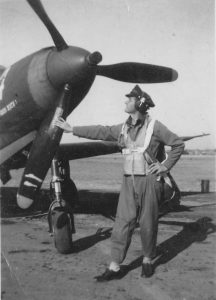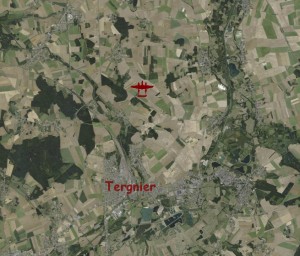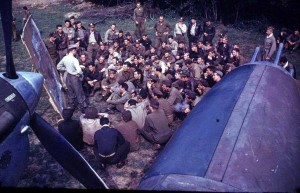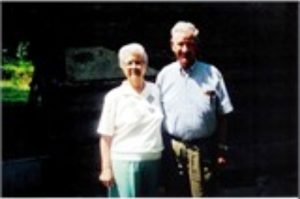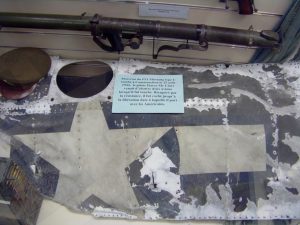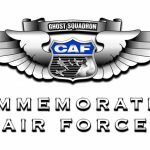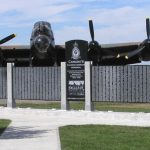In the summer of 1944, the skies above the French region of Picardy were the site of some of the largest air battles yet in the Second World War. Second Lieutenant James Clayton Johnston of the US Army Air Force’s Ninth Air Force, 367th Fighter Group, was at the controls of his Lockheed P-38 Lightning when he and his squadron were, in his words, “jumped by a swarm of Fw 190s.” While many in his squadron perished on that day, and Lieutenant Johnston’s plane crashed, leaving him severely injured, through the help of the French Resistance he and many other downed allied pilots were rescued, nursed back to health and returned to the Allies to continue the fight. This is James’ story and the story of the remains of his plane, which is destined to take its place in a museum that commemorates the 20th Century’s wars which twice saw this region on the eastern side of the Germany’s Western front, the horrors of Holocaust, and celebrates the bravery of the men and women of the French Resistance.
Original after-action reports, filed after Lieutenant Johnston’s retrieval and return to the UK, reveal the details of his crash and the assistance rendered by the French Resistance. Just after noon on August 25th, his planes was felled by the German warbirds, who shot both Johnston and his P-38, causing the left fuel tank to explode. Johnston bailed out of his stricken P-38 at about 2500 feet, badly burned on his wrists, arm, neck and face, and with 20mm bullet wounds in his left shoulder, arm, side and leg. His plane exploded upon impact with the ground, and Johnston was further injured upon landing, spraining his ankle.
Unable to move for what he estimated to be about half an hour, eventually Johnston summoned the strength to struggle out of his parachute harness and flak suit. Discovering he was unable to stand, he crawled into a nearby thicket to nurse his wounds as best he could, utilizing a tube of condensed milk from his Aids Box to soothe his burns, as well as taking in some sustenance from the kit from in the form of half a bar of chocolate, some Horlick’s tablets and a dose of benzedrine.
As dusk started to fall, Johnston made his way, slowly and painfully towards the small town of Queesy. At the outskirts of the town he hid in behind a hedgerow. After a time, a woman exited a house and Johnston allowed her to see him. The woman looked up and down the road on which the house fronted, and upon which German forces were traveling, and when the Germans had passed, the woman went inside and sent her husband out. The man gave James some food and a blanket and instructed him to stay put and out of sight. In the morning, they brought James inside, treated his wounds and gave him civilian clothes to replace his tattered American military uniform.
(Image Credit: Les Faucheurs de Marguerites)
A couple hours later a girl came by with a horse-drawn cart and James was hidden inside and taken to Frières-Faillouël, about five miles away, to the home of the local leader of the French Resistance. At the Resistance leader’s home, two nurses were called in to tend to James’ extensive wounds. Later that day he was moved across the street to another resistance member’s home where he cared for for another week. The town in which Lieutenant Johnston was staying was in the north east of France, not far from the border of Nazi-occupied Belgium and Germany itself, and as such it was seeing a great deal of German activity as the Germans rushed manpower and materials to their Western Front an attempt to drive back the Allies’ advances.
Johnston’s strength returning, and the high levels of German activity as the war’s front approached the area, saw the local resistance chief sending James about a mile and a half away from the village to the Resistance’s French Forces of the Interior camp hidden within the woods, where they were also hosting other downed Allied pilots, including an American P-51 Pilot, some British and several Soviet airmen.
James had been in the camp for three days when word reached them that the Allied forces were taking the town. James waited an additional day for things to settle down there and on the 3rd of September got into a car along with the other American pilot and one of the British pilots and made their way to the nearby town of Chauny where the Allies had established a temporary hub to support their drive east. In Chauny, Johnston received medical treatment from British medical personnel, who properly patched him up, and he again returned to the village that had sheltered him, staying for one last night in the house in which he hid for a week, though this time on a happier and safer side side of the front lines.
The next morning, James was picked up by an ambulance and taken to a nearby evacuation hospital, later making his way to Paris and return to his unit in the UK. The after-action report describes the heroism of the French resistance as well as providing a glimpse into the sophisticated feedback system that was instituted to provide intelligence and constant improvements to the policies and procedures for those who found themselves behind enemy lines, and it’s well worth a read.
James lived to be 86 and passed away in 2011. Our story does’t end here though. Lieutenant Johnston’s P-38 has been located, aided by careful research and metal detectors, Philippe Lantiez and his team from “Les Faucheurs de Marguerites” (The Daisy Reapers), a local RC aviation enthusiast group have made it their mission to help commemorate the sacrifices made by the Allied forces and the French Resistance forces in helping to free their homeland. Over the last 2 years they have successfully unearthed most of a Fw 190, located another P-38, and gathered substantial documentation, including an eyewitness report of the air battle at the time, as well as the names of the resistance members who saved James all those years ago.
(Image Credit: Les Faucheurs de Marguerites)
The Daisy Reapers’ previously unearthed relics from the war have gone on display at the Musée de la Résistance et de la Déportation de Picardie (Museum of the Resistance and the Holocaust), and the Johnston’s P-38 has already had space allocated for its display. Metal detector findings at the crash site have been confirmed by the exhumation of several P-38 parts, including part of the craft’s left wing which was preserved in remarkably good condition.
So, the group is sure of the location, has a digging team, a 20-ton crane and a flatbed truck that stand ready to carry the remains of the plane to the museum. The farmer who owns the land has given the group permission to dig, and they have until the end of September to accomplish the task before crops are planted. The total budget for the project is 4,000 Euros (approximately $5,300 US). Those interested in learning more about the group and this project are encouraged to visit the group’s project page. If you are interested in supporting this worthy project, the group has just set up a donation page at FundRazr or if you prefer PayPal, you can go to this page, that while in French, has an easily identifiable PayPal button.
Here’s a video on the P-38 Lightning Rescue Project:









